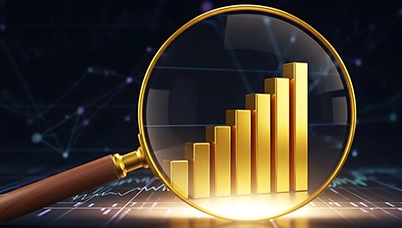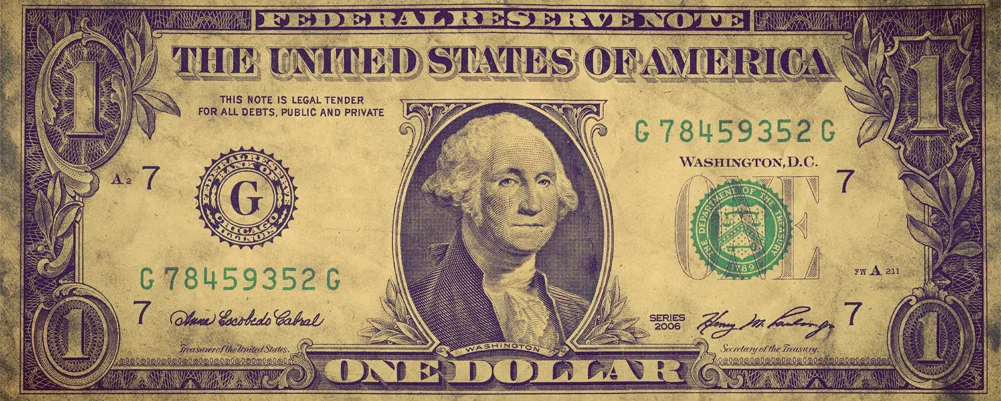Will the US currency be used as tissue paper?
Posted On Thursday, Jul 30, 2009
In the last one year, the U.S Federal Reserve has spent hundreds of billions of dollars in trying to rescue the US economy and restoring liquidity to the financial markets.
This massive infusion was perceived as necessary by the policy makers to save the US economy from a collapse. CNN reports that the U.S government has committed a mind-boggling $10.5 trillion (3 times the value of all goods and services produced in China and India combined!) to this rescue effort. Of this $10.5 trillion, the US has already invested / spent / lent a sum of $2.5 trillion on their rescue efforts.
That`s a lot of money.
Whichever way you lay it down.
If each dollar bill was laid out in a straight line that would be the equivalent of (10.5 trillion dollars multiplied by the length per USD bill i.e. 15.6 cms) 1.638 billion km.
Enough to take you to the moon and back more than 2100 times.
Or if each bill was laid out to cover the surface area of the recently completed 8-lane Bandra-Worli sea link in Bombay, you could approximately build 9300 such bridges.
The Bandra-Worli bridge took 10 years to complete.
The Fed has built its 9300 paper bridges in one year.
If you look at the cost of project, it took 1600 crore rupees to complete the bridge equivalent to 0.00032 trillion dollars. On this count, the $10.5 trillion commitment would build 32,812 such bridges.
The US central bank has a bad balance sheet
Since the crisis broke out, the Fed has weakened the quality of its balance sheet. It has been busy buying all the defaulted mortgages and the underlying homes and other assets (including General Motors) - and paying for it by printing money and making sure the printing presses are busy throughout the day and night.
Central bankers are supposed to be models of sobriety.
They now seemed addicted to the fumes of printing ink.
Instead of paying for the purchase of good assets with the sale of other real assets, the Fed is paying for the junk it is buying with paper currency. With US Dollar bills that it can print at will.
As a result, the U.S monetary base - an indicator of money sloshing around in the system - is expanding rapidly. It will have more than doubled by the end of 2009.
Chart: The scary increase in the U.S. monetary base

Source: St. Louis Fed
The adjusted monetary base is an index that measures the effects on a central bank’s balance sheet of its open market operations, discount window lending, unsterilized foreign exchange market intervention, and changes in statutory reserve requirements. The grey vertical lines indicate periods of economic recession in USA
This current expansion in the "Adjusted Monetary Base" (as the economists call it), is the largest expansion since the statistic has been being tracked.
By a wide margin: like 7 to 1.
This rate of expansion is unprecedented in U.S postwar monetary history. It is larger than the expansions during the Y2K and dot com bubble and the terrorist attacks of September 11.
It doesn’t end here. The Fed stands ready to change the terms of its recent acquisitions and is willing to extend these rescue programs should the financial turmoil continue.
Is this massive increase in the "Adjusted Monetary Base" going to result in a larger economic crisis in the future?
Is this massive increase in the "Aggregate Monetary Base" going to result in higher inflation?
As per "monetary theory", a significant increase in the money that central banks print eventually leads to an increase in the prices of things that we buy in our everyday lives: our food, clothes, and homes. This increase in prices, though, could happen with a lag.
But talking about increasing prices and worrying about inflation seems silly, doesn’t it? Today, people are losing their jobs and cutting back on spending, prices of most goods are actually declining.
So, on the one hand you have the Fed printing money and creating inflationary pressures, on the other hand the dramatic slowdown in the global and US economy is causing companies to reduce prices.
But that is today.
One needs to plan for the future.
Remember 2007? Two years ago, everyone was so engrossed in the global growth story that they were stunned at the sharpness of the decline in the world economy.
We tend to focus on today - and forget the dangers lurking around tomorrow.
This is 1970 - and 5 times worse!
It is extremely difficult to estimate the enormity of these inflationary measures. Peeking into what has happened historically, we do not get instances of such enormous increase in money supply. But, the monetary policies of 1970’s does look similar to that of today - except the magnitude of increase this time around is 7x. The comparatively undersized monetary expansion of 1970s led to inflation level increasing to double digits. At the same time, gold prices increased from near $35 an ounce to $850 - a result of inflation and the effect of speculation.
Gold is the only "currency" that central bankers cannot control forever. The price of gold is measured in paper currencies. The one’s you can print and put a few colours on and add a signature at the bottom to give it respect. But paper currencies can be misused. As the Fed is misusing it now. They can be printed in endless quantities just like tissue paper. The signatures on the printed dollar bills have less meaning. "In God We Trust" is a slogan to fool.
That is why the price of gold increases when governments spend more than they can afford to. And when central bankers happily oblige their political masters with full access to the printing press.
Chart: Gold in USD and INR (Rebased to 100)

Source: Bloomberg
Note: In the above chart, Indian gold price used does not include any duties or levies. It’s the international gold price converted to Indian Rupees using the INR rate.
Is `Save the world, worry about inflation later’ the right approach?
Because of the seriousness of deflation and the desire to create more jobs (and save many more jobs by rescuing bad businesses like General Motors and the crooks in the global financial system), policy markers are likely to be biased towards "over-accommodation". The Fed is looking the other way and is ignoring the basis of central banking. The future enemy will be inflation - the problem they create because of their desire to combat the much bigger threat of deflation and a shrinking economy.
The U.S monetary base will likely continue to expand. The Fed will be forced to print more money. This could lead to a surge in inflation in the near future.
Protect your wealth during these inflationary times, during these times of "hyper-inflation".
Gold tends to increase in times of hyper inflation.
Gold will also help keep value in times of crisis, in case the global economy deteriorates further.
If you haven`t put 5%, 10% or 20% of your savings in gold, buy gold now.
Invest in the Quantum Gold ETF.
Related Posts
-

Gold Monthly for December 2025
Posted On Thursday, Dec 04, 2025
After a series of events and a strong rally in October 2025, gold demonstrated a mixed performance in November 2025, moving back and forth within a defined range.
Read More -

Equity Monthly for December 2025
Posted On Wednesday, Dec 03, 2025
Markets continued the rising trend in October with Sensex gaining 2.2%.
Read More -

Debt Monthly for December 2025
Posted On Tuesday, Dec 02, 2025
As we approach the end of the calendar year, we find ourselves at a pivotal moment, with the market split on the likelihood of an upcoming rate cut.
Read More





